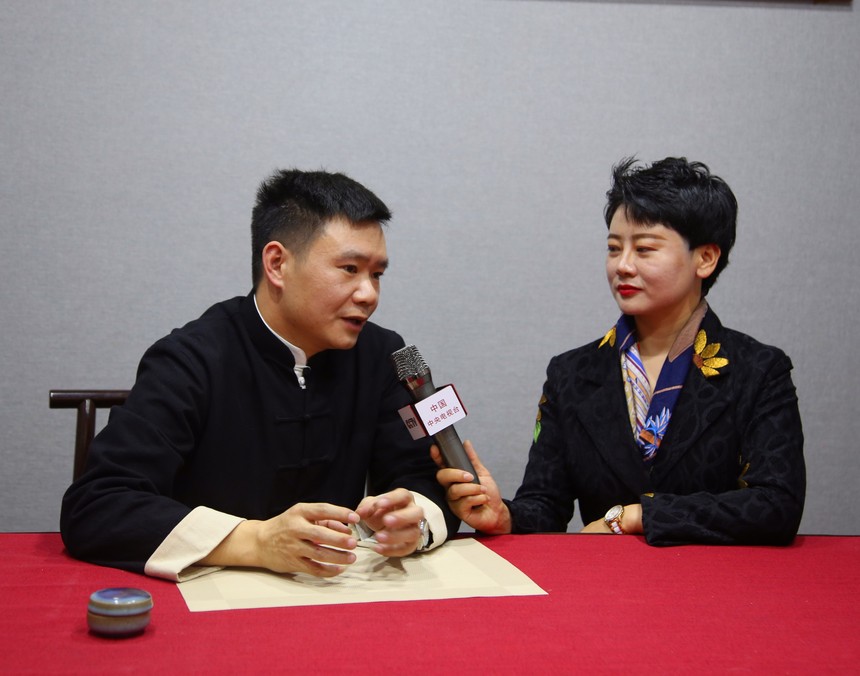|
|
Art and Art Museum chief expert Tan Dagao: porcelain identification to look at the type of ware, fetal glaze, on decorationOn October 17, Henan Art and Art Museum officially opened in the North District of Tianxia Collection in Zhengdong New District。 Thousands of sails compete for success。 After years of hard work in China's art industry, art collection has become an indispensable nectar to nourish life, auction houses have also developed from a few to hundreds of thousands, art galleries, art galleries, museums are emerging, at this time, Henan Art and Art Museum will brave the tide, do the industry's weather vane? In this regard, the reporter rushed to the art and art museum of Henan art and art Museum chief expert Tan Dagao made an interview。 1. Hello, Mr. Tan, what do you think of the art collection market today? According to incomplete statistics, China's collection enthusiasts have more than 100 million people, but it is regrettable that behind the brilliance, the problem of making fake, selling fake, hiding fake also emerged!Due to the lack of historical and cultural knowledge and the lack of ability to distinguish truth and falsehood, many collectors have collected a lot of forgeries, which has brought immeasurable damage to their lives。
Reporter interview art and art museum chief expert Tan Dagao 2. You have a long reputation in the industry, Tibetan friends have praised your identification accuracy, can you share some ceramic identification experience for us? The method of ceramic identification, looking at the type, the tire glaze, the decoration, understanding the historical background and other ways, but for beginners, whether it is looking at the type or turning the book, it is not easy to master, you can start from the bottom foot。The porcelain of each era and each kiln has its own different characteristics, and these differences often have a lot of information in the exposed place of the ware - the bottom foot。The bottom foot is the place where ancient porcelain contains the most information。Through the bottom foot, you can see its embryo, its glaze, you can see its embryo glaze combination, firing process, aging degree, etc。When they do embryo, cushion firing, kiln out, due to the proportion of embryonic soil raw materials is different, show or red, or gray, or white color;When repairing the foot, the process of different generations are different, so how to identify the authenticity of ancient porcelain from the foot?The "mastoid process", "whirling mark", "jumping knife mark", "brown eye", "kiln red", "mat burn mark", "Hu Mi bottom", "knocking bottom", "dipping kiln sand" and so on in the sole foot are obvious traces of the age left by ancient porcelain。
Tan Dagao, chief appraisal expert of Art and Art MuseumExplain the method of porcelain identification 3 .Ru porcelain ranked first among the five famous kilns in the Song Dynasty, and was known as "Ru kiln for the leader" in the history of Chinese ceramics。What is the difference between Qingliang Temple Ru porcelain and Zhanggong lane Ru porcelain? 1. The glaze color of Ru kiln in Qingliang Temple is pure azure,The glaze color of Zhanggongxiang Ru kiln is light,The glazed glass has a strong texture,The hand feels smooth;2, Qingliangsi Ru kiln has two kinds of ice cracks and fish scales,The open slice of Zhanggongxiang Ru Kiln is fine and remarkable;3. The body of Ru Kiln in Qingliang Temple is fragrant gray,The body of Zhanggongxiang Ru Kiln is thinner,The fetal color is white,Generally grey;4, Qingliang Temple Ru kiln branch burning utensils outside the main wrapped foot,The pins are slender and sesame-shaped,The number of pins is mostly singular 3 or 5,And Zhanggongxiang Ru kiln is mostly flat circle foot,The outer bound foot is less,The spikes are round millet grains,The number of pins ranges from 3 or 4 to 5 or 6,There are both singular and even numbers;5. Zhang Gong Lane汝窑拥有盘口细颈瓶、鹅颈鼓腹瓶、堆塑莲纹熏炉、套盒、盏托等不少器型。There are some differences with the same kind of Ru kiln in Qingliangsi, but the flower mouth folding belly circle foot plate, flower mouth plate along the flat chassis, oval circle foot wash and square flat chassis are not found in Qingliangsi Ru Kiln。 Tan DagaoGraduated from the Department of Archaeology, Northwestern University, ancient ceramics researcher, ceramic identification expert, chief of art and Art Museum鉴定专家。He has been engaged in the investigation and research of ancient kiln sites for more than ten years, and won the Honor Award for identifying ancient kiln mouth in 2018. He is good at ancient ceramic archaeology, ceramic art appreciation, ceramic authenticity identification, and has unique research on jade, purple sand, coins, etc. He has written a lot in the aspects of cultural relic identification, literature and history research, which has a certain influence in the academic circle。 |


